How to Have a Brilliant Resource Centre on Your Website
Resource sections are becoming more and more popular on websites. They are a great way to give your potential customers access to useful and relevant information but what makes a great resource centre? We outline best practices, benefits and great examples.

Marketing is changing. Where it once was about finding leads and persuading them to purchase your product or service, it’s now about freely giving your audience access to the tools they need to decide for themselves. And if your website doesn’t tell them anything, then there is likely going to be a competitor website with more useful and transparent information.
To adapt to this new way of buying, resource sections have become more popular and started appearing on more websites. So, what are the benefits of having one?
Why resource sections?
- Educate your target audience and website users
- Allows users to easily find information that they seek
- Increases the ‘stickiness’ of your website (how long users are likely to stay on your website and browse)
- Allows your users to share your content, which then spreads your brand for you
- Can help to improve SEO
- Keeps visitors engaged with your content especially when there is a variety of media
- Helps cater for those with little time who want to take download and read later
- Can help drive newsletter signups
- Gated content can be a form of lead generation
It’s important to say that not all websites will find a resource section beneficial. Just because it's popular doesn’t mean you need to ‘shoehorn’ it into your marketing or website strategy. However, don’t just think of whitepapers when you think ‘Resources’ – this could be anything that provides information, such as: videos, pictures, case studies, eBooks, infographics, checklists etc.
Now let’s say a resource section could work for you… what are the best practices of brilliant resource sections? Luckily, this is the whole point of this blog so we’re about to share our top tips for a powerful resource library and give some examples we particularly enjoy.
Resource centre best practices
Easy access: Ensure clear navigation to the resource centre and include prominent call to actions (CTAs) on relevant pages.
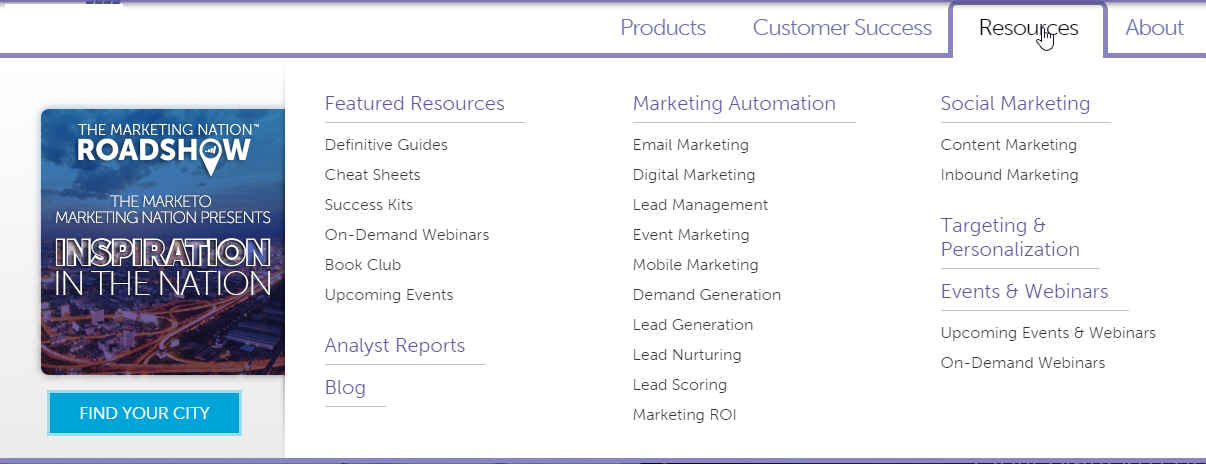.png?width=700&height=269)
Source: Marketo
I love the way that featured resources have their own area and that the areas are split into categories so you can quickly choose to just pick the topic that interests you. Also having space for one image means you can promote current campaigns and continually update and change the 'spotlight' resource.
Clear content organisation: Ensure content is clearly organised and labelled with an informative title and clear an insightful summary and make sure users can quickly identify the type of content that they’re looking at (video, whitepaper, how-to etc). Sometimes using icons can make this more user friendly.
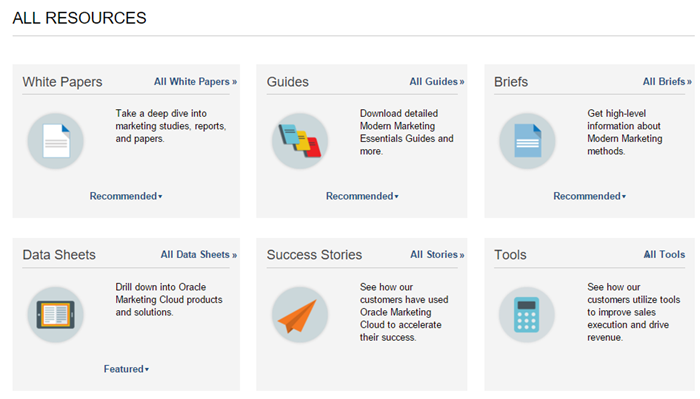
Source: Oracle Marketing Cloud
I'm a little obsessed with icons. I love them and I find them helpful when quickly navigating around, so I like that they have used them here while also splitting the resource by content type so you can pick the type of content that you like best.
Lovely landing pages: The ‘Resource centre’ homepage must be clear and well organised, so users want to explore it when they land there. If you have gated content, then having a user friendly and beautiful landing page for each piece of content is a huge help, especially when users may arrive directly to that page from the back of a marketing campaign.
Let your users find it in multiple ways: Everyone searches for things differently, so you need to accommodate for this by having multiple user journeys. For example, you could search by category, content type, author, title, or date to name a few. A great way to solve this is through tagging content.
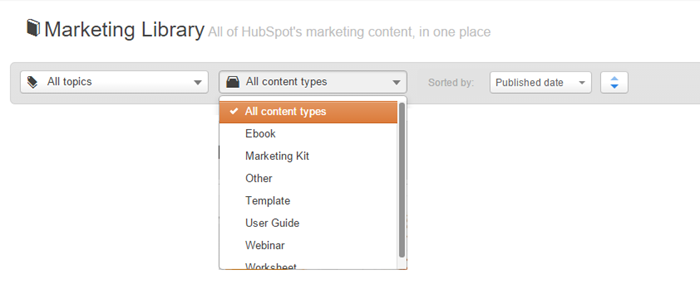
Source: Hubspot
Some people will want to look at your recent resources, others may know the title and some just want to be inspired so being able to search in different ways is handy. I like the ability to search by content type, topic and date here as I think they are the most logical ways to search.
Meet user expectations: There’s nothing worse than seeing a great title but finding that the content has nothing to do with it. If your whitepaper says it has the steps to do something, then make sure that it does! Make sure you have clear descriptions and a title that does what it says (but you can still have fun with attention-grabbing titles).
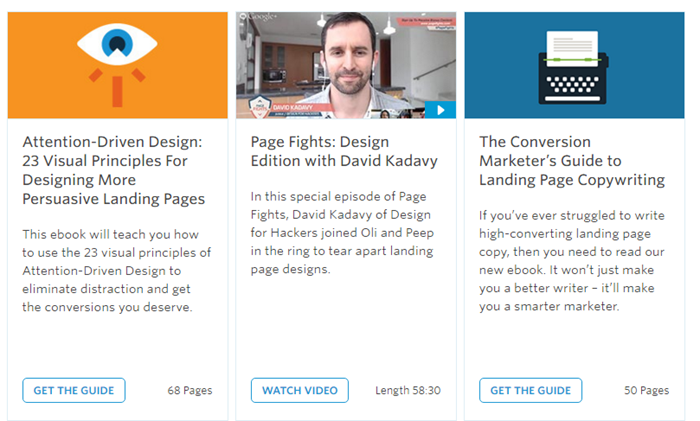
Source: Unbounce
As well as having clear titles and summaries (with relevant pictures) it even shows you how many pages or minutes each resource is so you know exactly what to expect before you even click.
Always have imagery and visuals: People love pictures. Fact. So include images with your resources – whether it’s a screenshot of the front page, or a snippet of a diagram, including it can really increase click-through rates... but make sure its relevant. Yes, we all love pictures of puppies, but if I download a guide with cute dog pictures on it but there is no mention of puppies within it then I won’t be happy.
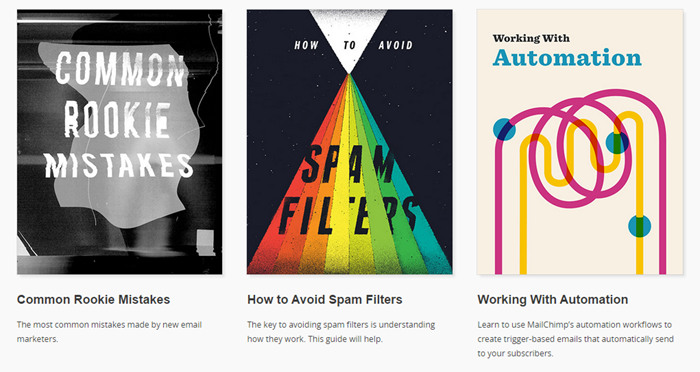
Source: Mail Chimp
I love how Mail Chimp have clear and simple titles and even have clear but simple imagery to go with their resources. Automation and spam filters aren't the most exciting, visual topics but they still make their images relevant and sometimes think outside the box. ('Getting started' guide has a full English breakfast, which let's face it is the best way to get started! Still not 100% sure about their Email Marketing guide having traditional illustrations of birds that cover the title though....)
Enable social sharing: Having prominent social sharing buttons can mean that your users do your marketing for you. By encouraging users to share your content you can have a wider influence – and don’t forget email sharing.
Member benefits: If your website has a member login section or a membership scheme then this can tie in nicely with resources, either by giving them exclusive first-looks or auto-populating any forms they need to fill in to give users another reason to sign up.
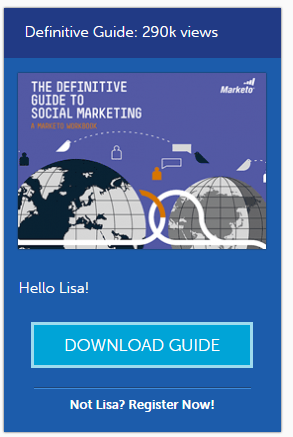
Source: Marketo
Well hello Marketo! Nice to see you remember me and auto-complete my details when I'm feeling too lazy to type :)
Gated or ungated: Gated content means filling in forms so you can capture an email and identify your website visitor, while ungated means anyone can just click and view. If you do have gated content then ensure maximum UX in your download forms – and keep it minimal! Less info to enter = more people willing. Note: For SEO purposes it’s important to realise that ungated content is crawl-able (helping your SEO) while gated content is not.
Original Article